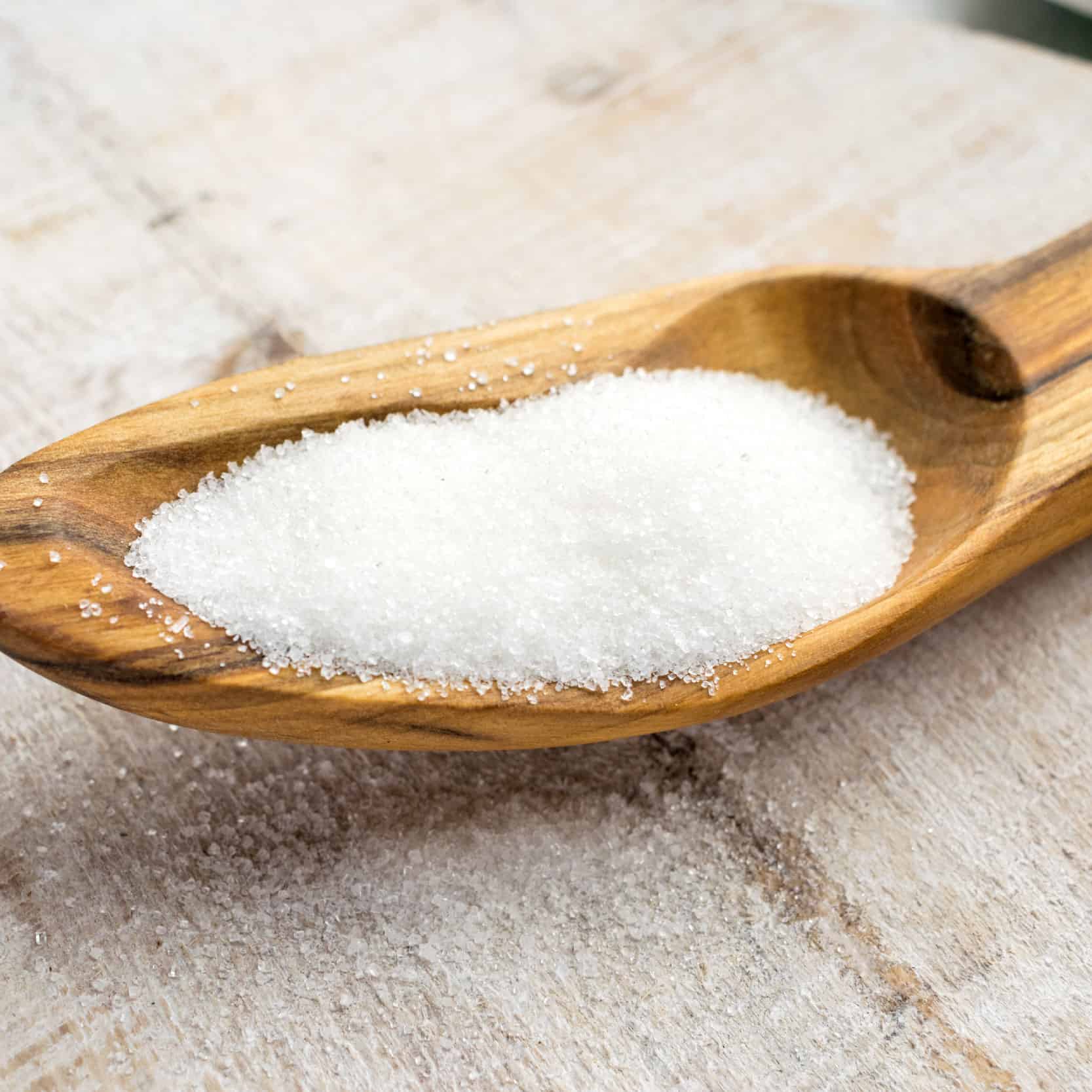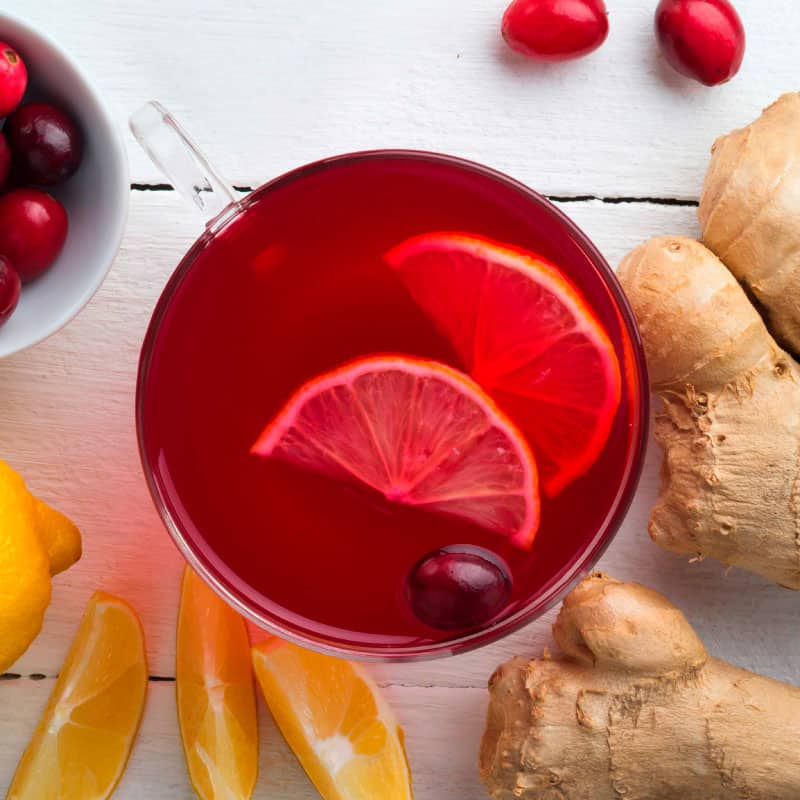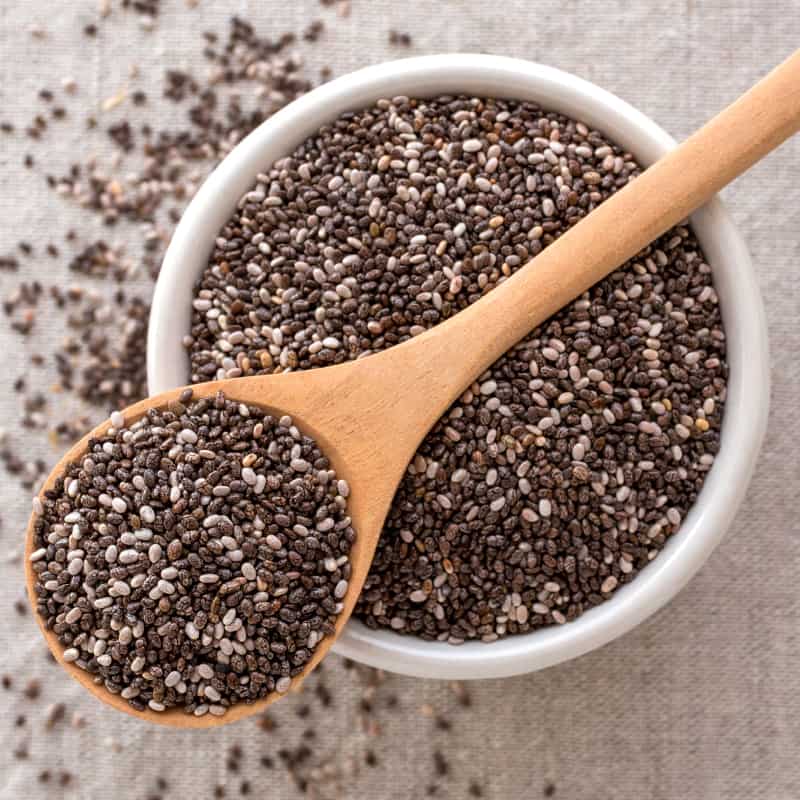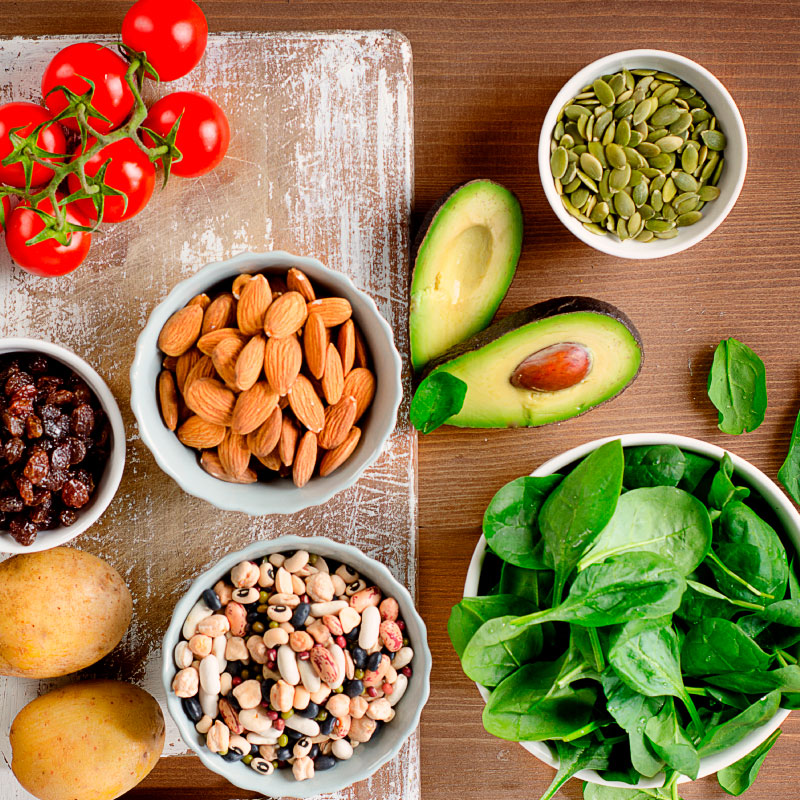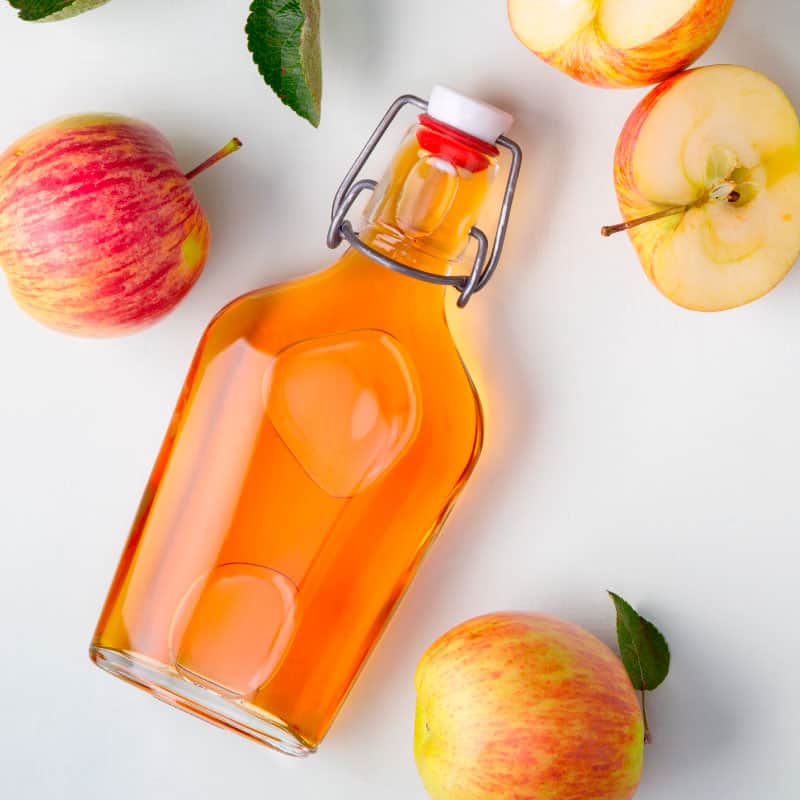This Dr. Axe content is medically reviewed or fact checked to ensure factually accurate information.
With strict editorial sourcing guidelines, we only link to academic research institutions, reputable media sites and, when research is available, medically peer-reviewed studies. Note that the numbers in parentheses (1, 2, etc.) are clickable links to these studies.
The information in our articles is NOT intended to replace a one-on-one relationship with a qualified health care professional and is not intended as medical advice.
This article is based on scientific evidence, written by experts and fact checked by our trained editorial staff. Note that the numbers in parentheses (1, 2, etc.) are clickable links to medically peer-reviewed studies.
Our team includes licensed nutritionists and dietitians, certified health education specialists, as well as certified strength and conditioning specialists, personal trainers and corrective exercise specialists. Our team aims to be not only thorough with its research, but also objective and unbiased.
The information in our articles is NOT intended to replace a one-on-one relationship with a qualified health care professional and is not intended as medical advice.
Are Oats Gluten-Free? The Truth About Oats & Gluten
December 2, 2020
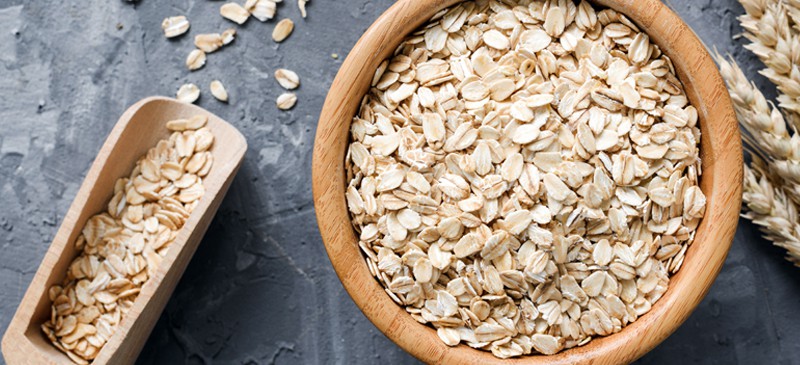
Oats are often praised as one of the healthiest breakfast options around — but many people are also confused about how oats are made and what makes them different from other cereal grains, including wheat.
Left wondering — “Are oats gluten-free?” — some people choose to give them up all together without knowing the full story.
So what’s the verdict on oats? Are they healthy or likely to lead to gluten sensitivity, indigestion and other issues, much like refined carbohydrates do?
Below we cover whether different types of oats are gluten-free, plus pros and cons of including them in your diet.
What Are Oats?
Oats — which come from the plant with the scientific name Avena sativa — are a type of common whole-grain cereal grain grown for the seeds.
Can you eat oatmeal on a gluten-free diet? In some cases, yes.
Even if you think it’s time to give up gluten — and therefore foods like bread, pasta, most cereals, etc.— fortunately you don’t need to also ban all oats.
Oats vs. Wheat
Wheat, barley and rye grains are the three groups of whole grains that naturally contain the protein gluten. Instead of containing gluten, oats actually have a protein called avenins.
While oats themselves don’t contain gluten, in many cases they are grown on the same land and in rotation with gluten-containing grains (wheat, barley and rye). Gluten grains can grow within oat crops if they’re planted in the field the previous year, in which case the oats become contaminated with gluten.
Although oats are considered an unprocessed whole grain and have certain health benefits that wheat generally does not, it’s still recommended to consume even whole grains in moderation. While they provide important nutrients and can be found in gluten-free verities, grains still have the potential to cause digestive issues and contribute to weight gain and blood sugar imbalances when eaten in large amounts.
History
Oats have been eaten for thousands of years. In addition to providing important nutrients to growing populations, they’ve also historically been important for feeding livestock.
Evidence shows that wild oats first grew in the Fertile Crescent of the Near East centuries ago, although humans didn’t domesticate these grains until the Bronze Age in Europe. For many years, oat grass was even used for medicinal purposes, including to help balance a women’s menstrual cycle, as an osteoporosis natural remedy and a home remedy for urinary tract infections.
Oats have many uses around the world beyond just being the base for a simple breakfast. For example, oat bread has been an important food for many cultures living in Europe for hundreds of years, especially the English, Irish and Scottish.
They are also used in a variety of baked goods worldwide, including oatcakes, oatmeal cookies and oat bread.
Are Oats Gluten-Free? (How to Be Sure)
According to the University of Chicago Celiac Disease Center, yes — oats are technically gluten-free grains since they aren’t a type of wheat, barley or rye grain.
Can celiacs eat oats?
Certified, gluten-free oats are considered safe for most people with a gluten allergy, also called celiac disease.
They are also typically easier for most people to digest and less likely to cause negative reactions than certain other grains, so they tend to be tolerated by those with gluten intolerance symptoms too, as long as that person is careful about how the oats are manufactured and processed.
Reports show that “perhaps less than 1 percent of celiac patients show a reaction to a large amount of oats in their diets.”
How do you know if oats are gluten-free?
If someone with a known gluten allergy or sensitivity wants to buy and eat gluten-free oats, he/she should be careful that they’re sourced from a provider that guarantees there hasn’t been cross-contamination with wheat, rye or barley. These types of gluten-free oatmeal brands are labeled “certified gluten-free.”
Keep in mind that organic labeling doesn’t tell you anything about gluten content. Be sure that even if you buy organic oats, you check that they’re certified gluten-free, too.
Which brands of oats are gluten-free?
Here’s how to be sure yours are gluten-free:
- Most regular oats available in the supermarket (including Quaker types), even organic types or the kind sold in “bulk bins” at health food stores, are likely not 100 percent gluten-free unless they are labeled this way. Why? Because they are often cross-contaminated by foods with gluten due to a number of reasons.
- It’s very common for oats to be handled in the same facilities that manufacture wheat-containing products, so there’s always a chance that they can become contaminated with gluten during the packaging process. Once the oats are harvested and brought to a manufacturing facility to be cleaned and packaged, gluten crops might be mixed in with them. Thus, little bits of wheat, barley or rye may end up in a package of other grains. Even if this doesn’t happen, oats and gluten crops are likely to be processed using the same equipment, which creates another chance for contamination.
- Gluten-free oats are guaranteed to be grown on fields that aren’t used to grow gluten crops, shipped in gluten-free trucks and processed on gluten-free equipment.
- Quality inspections by third parties also ensure the pedigreed crops are free from contamination by wheat, rye, barley and other related grains — and that the gluten-free product is, in fact, that. This is the only way to be totally sure that oats are safely free of even trace amounts of gluten.
Nutrition Facts
Oatmeal is one of the most popular whole grain recipes worldwide, and for good reason. Oat grains are a good source of fiber, trace minerals and even plant-based protein.
Eating gluten-free oatmeal regularly is a good way to obtain B vitamins, iron, magnesium and selenium. That is why the American Heart Association considers oatmeal to be a “certified heart healthy food.”
Like all whole grains, oatmeal even contains some healthy fatty acids since the grain’s entire germ, endosperm and bran remain intact. That is where not only nutrients are stored, but also small amounts of essential fats.
A half cup (about 40 grams) of regular dried or instant rolled oats (which makes about one cup of cooked oatmeal) contains approximately:
- 154 calories
- 28 grams carbohydrates
- 5–6 grams protein
- 1–2 grams fat
- 4–5 grams fiber
- 5 milligrams manganese (73 percent DV)
- 166 milligrams phosphorus (16 percent)
- 7 milligrams selenium (16 percent)
- 56 milligrams magnesium (14 percent)
- 0.19 milligrams thiamine (12 percent)
- 7 milligrams iron (10 percent)
- 5 milligrams zinc (10 percent)
- 0.16 milligram copper (8 percent)
- 0.45 milligram pantothenic acid/vitamin B5 (5 percent)
Benefits
1. Help Lower Cholesterol
Oatmeal contains soluble fiber, particularly beta-glucans, which can help naturally lower cholesterol when eaten several times or more per week.
B-glucan is a soluble dietary fiber found in the endosperm cell walls of oats that’s praised for its cholesterol-lowering, insulin-regulating properties. In fact, because they contain more soluble fiber than many other grains, oats are one of the most recommended grains for reducing LDL (“bad”) cholesterol, total cholesterol levels and the risk of heart disease.
According to the U.S. Food and Drug Administration, a high-fiber diet (with as little as just three grams of soluble fiber daily from whole grains) can lower the risk for heart disease. Studies show that people who consume whole grains like oats and eat plenty of fiber from whole foods are more likely to maintain better cardiovascular health, in addition to a healthier body weight.
One reason this is true is because they not only contain fiber, but important, heart-healthy trace minerals and phenolic compounds linked to lower inflammation levels, reduced hypertension and disease prevention. The fiber we acquire from these grains swells up in the digestive tract, absorbing water and taking with it waste and excess cholesterol particles.
2. Provide Filling Fiber
Whole grains contain more belly-filling fiber, in addition to more vitamins and minerals, compared to processed and refined cereal grains or carbohydrates.
Soluble fiber is present in the outer casing, called the bran. Oats contain about 55 percent soluble fiber and 45 percent insoluble fiber.
Fiber is more than a regulator. High-fiber foods also take up a large amount of space in your stomach while absorbing water. Thus, they help you feel satisfied despite being low in calories.
Can oats make you fat, or are oats good for weight loss? Oatmeal can help support weight loss because of the high fiber content that makes you feel full, satisfied and less likely to deal with cravings.
Certain studies have found that short- and long-term oatmeal intake has significant effects on controlling hyperglycemia, lowering blood lipids and reducing weight.
Something interesting to note, however, is that if you eat oatmeal regularly for breakfast, make sure to add some protein and fat in order to stay full for longer.
While oats can feel dense and filling, on their own they likely won’t keep you as full as a higher protein breakfast. For example, a 2017 study found that compared to an oatmeal breakfast, two eggs per day does not adversely affect biomarkers associated with cardiovascular disease risk in healthy adults but does increase satiety throughout the day.
3. Help Improve Digestion
Fiber can help you maintain regular bowel movements. Because we can’t digest dietary fiber from whole foods, it sweeps through our digestive tracts and pulls toxins and waste along with it.
This is one reason why many studies show that diets higher in fiber can lead to improved gut and colon health, constipation relief, and curtailed irritable bowl syndrome-related symptoms. To get the most benefits from eating whole grains, make sure to also increase your water intake to allow fiber to do its job best.
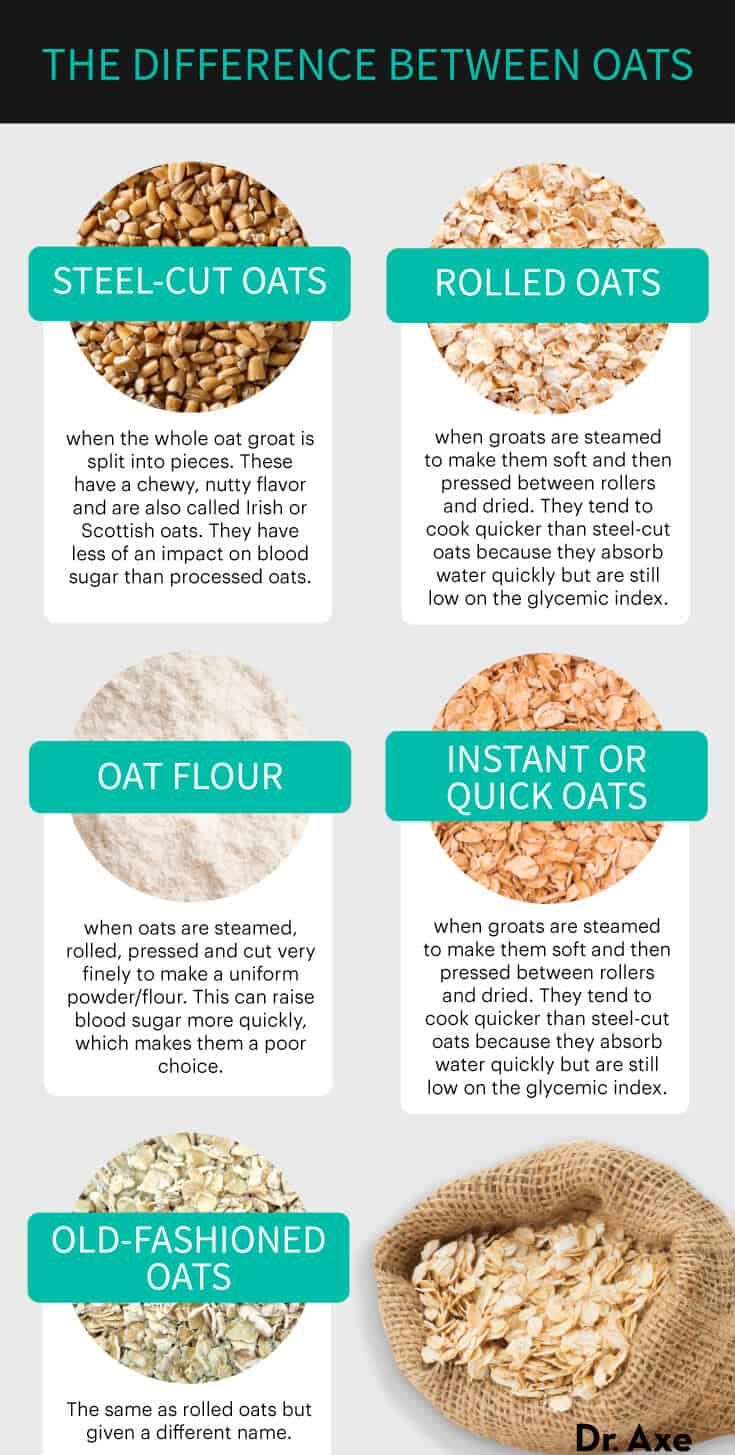
4. Increase Immunity
Beta-glucans, naturally occurring polysaccharides found in oats and other protective foods like mushrooms, are known to enhance immune function by fighting bacterial infection and lowering inflammation.
They do this by activating certain immune responses, especially white blood cells called macrophages that fight fungus, bacteria and toxins.
In fact, consuming foods rich in beta-glucans is even linked with the ability to naturally fight cancer cells. Beta-glucans have been shown to have anticarcinogenic capabilities and can potentially help reduce cancerous tumor growth.
5. Have a Low Glycemic Score Compared to Refined Grains
Steel-cut or rolled oats (the kind that are unsweetened and unflavored) have a low score on the glycemic index, especially compared to enriched or refined carbohydrates. This means they can prevent spikes and dips in energy, as demonstrated in both human and animal studies.
Oatmeal provides slow-releasing carbohydrates that keep blood sugar in check and support sustainable energy. Whole grains can also improve insulin sensitivity.
This is one reason they’re tied to lower rates of diabetes and other chronic diseases.
A 2018 study found that a two days of “oatmeal intervention” led to a highly significant reduction of required daily insulin doses in patients with type 2 diabetes, while maintaining adequate metabolic control compared to a diabetes-adapted diet only.
6. Provide Trace Minerals like Manganese and Phosphorus
Just one half-cup serving of oatmeal provides about 73 percent of your daily manganese and 16 percent of your daily phosphorus needs.
Manganese is important for maintaining a healthy bone structure since it plays a role in creating essential enzymes for building bones. It also supports your metabolism, energy levels, brain and hormonal balance.
Phosphorus is another crucial nutrient for bone health, in addition to protecting teeth and gums. Phosphorus-rich foods can contribute to healthy growth and development, and foods high in phosphorus regulate digestion of nutrients and support skeletal/bone, kidney, muscle, heart and nerve functions.
Oatmeal is also a good source of selenium, magnesium, iron, copper and B vitamins. Foods containing these nutrients prevent deficiencies that can cause a sluggish metabolism, anemia, poor energy, “brain fog,” mood changes, and aches or pains.
7. Higher Source of Protein Compared to Most Grains
Whole grains are a good source of plant-based protein, with more than eight grams in every 2/3 of a cup of oatmeal — more than you find in nearly all cereals. Together with fruit, raw milk or yogurt, it can make a filling breakfast that provides antioxidants and energizing nutrients.
How to Use (Recipes)
When it comes to buying oats, you already learned to look for certified gluten-free types to avoid gluten contamination.
The other important things to look for are steel-cut, rolled or old-fashioned oats that are made without added sweeteners or flavors.
Check the ingredients label carefully to make sure no flavoring, preservatives or chemical sweeteners are included. The sugar content should always be zero for pure oats.
Confused about all of the different kinds of oatmeals available in grocery stores?
No matter the kind you buy, all types start off as oat groats. Then they’re processed in different ways, which results in a variety of textures, uses and effects on digestion.
Different types have roughly the same nutrient breakdown and health benefits, although “quick oats” are absorbed by the body more quickly and can spike blood sugar more rapidly than rolled or steel-cut oats. Ideally, buy steel-cut or rolled oats.
Although these take slightly longer to cook, they’re also more versatile in baking and recipes since they’re less processed and hold their texture.
Here’s a breakdown of the different types of oats:
- Steel-Cut Oats — When the whole oat groat is split into pieces. These have a chewy, nutty flavor and are also called Irish or Scottish oats. They have less of an impact on blood sugar than processed oats. Are steel-cut oats gluten-free? The same rule applies to steel-cut oats as regular oats. They should be gluten-free, but be sure to buy certified gluten-free oats if you have a sensitivity.
- Rolled Oats — When groats are steamed to make them soft and then pressed between rollers and dried. They tend to cook quicker than steel-cut oats because they absorb water quickly but are still low on the glycemic index.
- Old-Fashioned — The same as rolled oats but given a different name.
- Instant or Quick — When groats are pressed thinner than rolled oats and steamed longer so they cook more quickly. They’re cut into tiny pieces, which sometimes makes them look powdery. These are the kind that are usually pre-flavored and sugary, so check to make sure they’re plain.
- Oat Flour — When oats are steamed, rolled, pressed and cut very finely to make a uniform powder/flour. This can raise blood sugar more quickly.
- Oat Bran — Oat bran is made up of the outer shells of the seeds. It’s very high in fiber and usually eaten in small amounts. Is oat bran gluten-free? Yes, just like other types of oatmeal, oat bran does not contain gluten. However, like other types of oats, there’s still concern that oat bran may be contaminated with wheat, rye or barley during manufacturing.
Tips for Cooking:
You can cook oats in a few different ways, but the most popular way is to make them on the stovetop. If you’re short on time, you can also make overnight oatmeal or cook them in an instant pot, which takes little effort.
To make oats on the stove, bring one cup of water (or a milk of your choice, such as almond milk, coconut milk or raw goat milk) to a boil, then add a half cup of old-fashioned rolled oats. Reduce the heat to medium, and sit them occasionally for about five to seven minutes or until they’re soft and have absorbed most of the water.
Looking for other ways to make oats? Let them sit overnight in water to soak, and then rinse them well and heat them for just one to two minutes.
You can also use rolled oats in granola or oat flour in baked goods or in place of breadcrumbs. Also keep in mind that oats don’t even need to be cooked at all.
Steaming and rolling them (which happens before they’re sold to customers) and soaking them does the job of making them edible. Muesli, for example, is made of uncooked oats.
Oat Recipes:
With everything from oat flour to diary-free oat milk now available in many grocery stores, there are loads of ways to incorporate oats into your diet. And don’t think that oats are limited to breakfast — you’d be surprised how many people enjoy “savory” oats or oat-based desserts that are low in sugar.
Here are several ways to start including gluten-free oats in your diet more often:
Risks and Side Effects
Even when someone doesn’t have a negative reaction to eating gluten, it’s possible that he or she might experience some symptoms when eating gluten-free grains.
What are the potential side effects of oats? These may include gastrointestinal troubles, including bloating, cramping or diarrhea.
This might be caused by the high level of fiber found in these grains. It is more likely to be a problem for people who aren’t used to eating high-fiber foods very often.
With some time, these should go away.
Soaking grains overnight and drinking lots of water can also help get rid of digestive problems. Like all other whole grains, soaking oats helps reduce antinutrients and enzymes that can mess with nutrient absorption and digestion.
Conclusion
- Are oats gluten-free? Oats do not contain the protein gluten, however most types available in supermarkets are not guaranteed to be gluten-free. Therefore, if you have an allergy or sensitivity to gluten, you need to be careful about looking for those labeled/certified as gluten-free.
- Steel-cut, rolled and quick/instant oats can all be gluten-free if they are labeled as so. An organic seal does not mean they are free of gluten — only a gluten-free label does.
- How are oats made? Here’s where things become a bit complicated. Commercially sold oats can sometimes be contaminated with gluten if they are mixed with grains like wheat, barley and rye during the growing or manufacturing process. They can potentially contain trace amounts of gluten unless they are certified “gluten free.”
- Gluten-free oatmeal nutrition health benefits include providing fiber, lowering cholesterol, improving digestion, reducing hunger, providing trace minerals and providing some plant-based protein.


